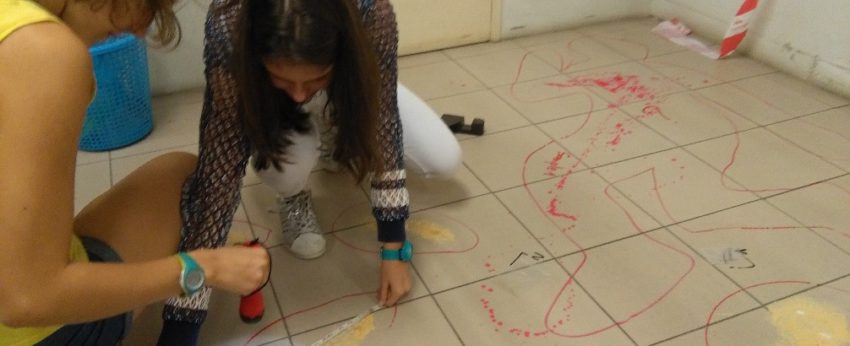As part of the MPS (Scientific Methods and Practices) exploration class, some Seconde students worked on the police forensic department’s methods. Before the Christmas holidays, they analysed a crime scene recreated in the science lab by my colleague, Mr Létoile and myself: after studying the police report and list of suspects, they contained the scene then picked up and analysed various types of clues (studied separately during previous practical work sessions) in order to answer the following question:
WHO KILLED THE LFKL LIFE & EARTH SCIENCES TEACHER?
Good experimental skills were of course essential. But they also had to look at the results with a critical eye, listen to each other and work efficiently as a team to solve this crime…without making any judicial mistake! They then drafted an investigation report they presented orally.
The students played along and gave their best. Here’s a little visual summary of their meticulous investigation!
“No one can act with the intensity a criminal action requires without leaving multiple traces of their passing. Conversely, they carried on their body or clothes clues of their stay or action.”
Edmond Locard, founder of the first forensic science lab in Lyon in 1910.
N.B. Any resemblance to actual persons is purely coincidental!
Mrs Agnès Fouillet, Life & Earth Sciences teacher.



